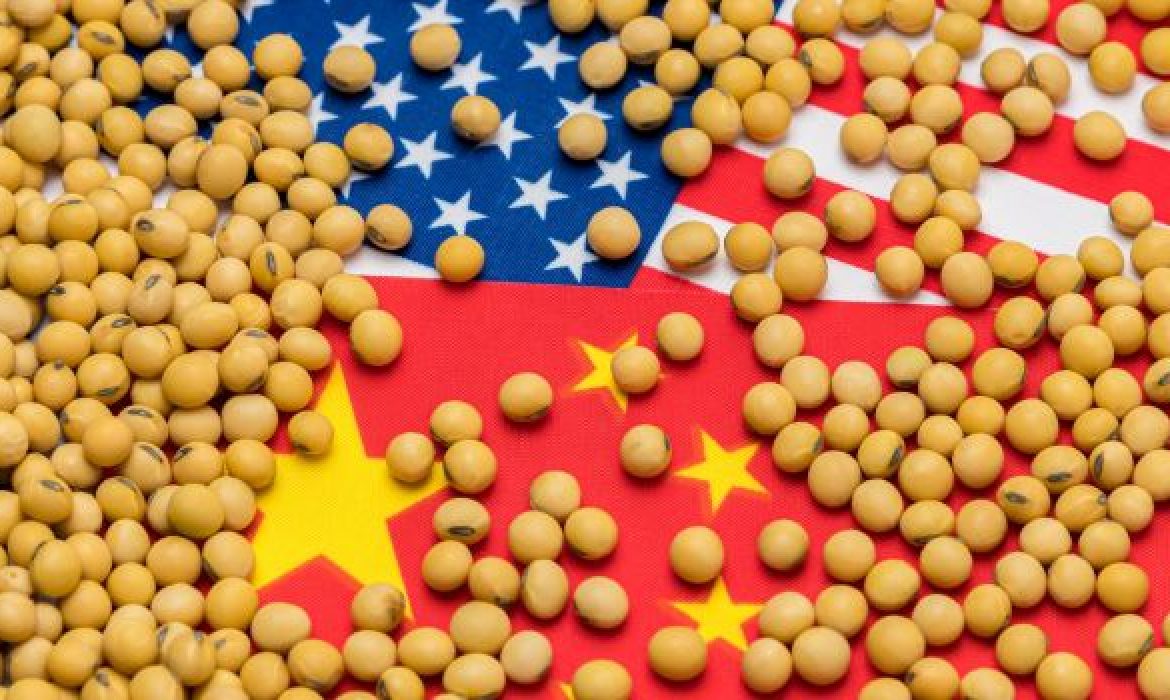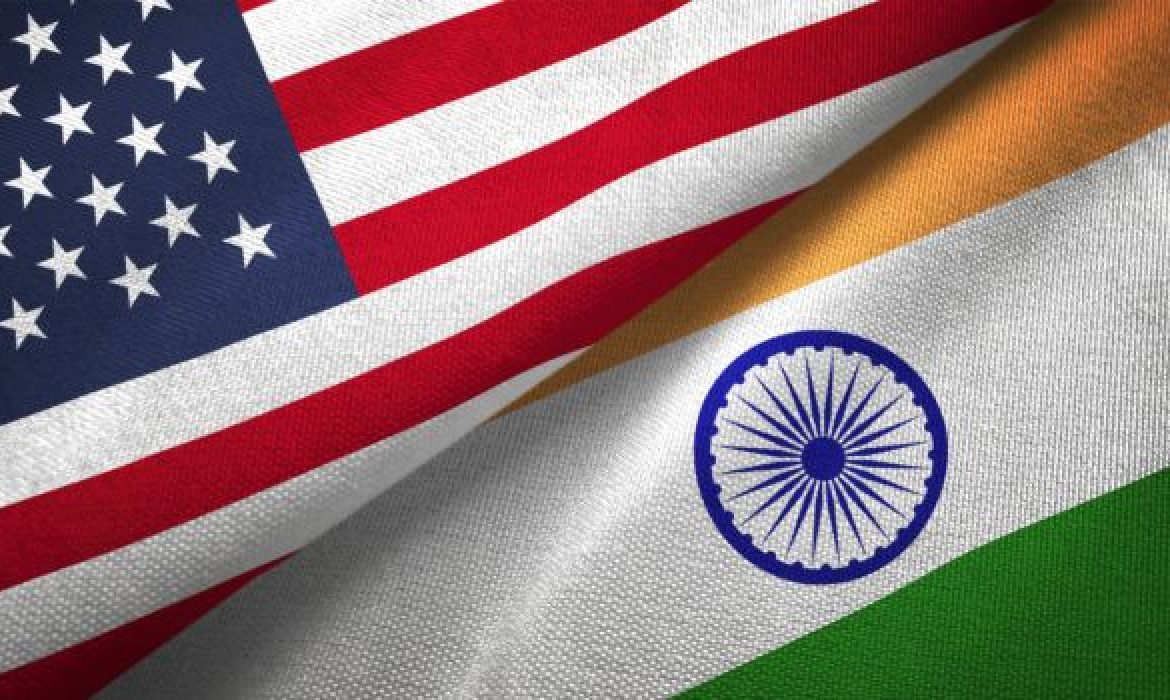Daily Synopsis of the Asia market close – November 17, 2025
Date Issued – 17th November 2025
Courtesy of the Research Department at Balfour Capital Group
Key Points
- China slows U.S. soybean buys despite truce: Record Chinese stockpiles and cheaper Brazilian supply curb near-term U.S. sales, tempering expectations from the recent trade deal.
- Japan GDP slips: Q3 contracted 1.8% annualized, with exports and housing investment dragging; talk of fiscal support and growth-sector investment likely to intensify.
- Crypto under pressure: Bitcoin has fallen about 25% from its October peak amid thin liquidity and fading risk appetite, with further downside if macro conditions tighten.
- Eyes on Nvidia: Global stocks cautious as Wednesday’s results test AI-led valuations; rate-cut odds for December have dipped below 50%, keeping tech sentiment fragile.
China Slow-Walks U.S. Soybeans Despite Trade Truce
China’s soybean imports from the U.S. have barely picked up since the Trump–Xi summit, with USDA data showing just two purchases (332,000 tons) as Beijing leans on record stockpiles and cheaper Brazilian supply.
Port inventories hit a high (10.3 million tons) after months of heavy buying, while Brazil supplied roughly 80% of China’s year-to-date imports and is poised for another record harvest: adding price pressure for U.S. farmers.
Beijing restored some U.S. import licenses and struck conciliatory tones, but state buyers show little evidence of a large buying program. For markets, soy remains a geopolitical lever, not a demand snapback.
Japan Q3 GDP Slips, but Consumption Softens the Blow
Japan’s economy contracted 1.8% annualized in Q3 (-0.4% q/q), the first decline in six quarters, as exports fell and residential investment slumped more than 30%.
The drop was milder than expected, helped by steady government and private consumption, with public demand up 0.5% q/q. Exports shrank 4.5% annualized, while private demand was the main drag amid a 9.4% q/q plunge in housing.
The figures bolster expectations for fiscal support under Prime Minister Sanae Takaichi, with Tokyo preparing a large stimulus focused on energy relief and growth sectors such as AI, semiconductors, and shipbuilding.
Crypto Slide Deepens as Liquidity Thins
Bitcoin fell below $95,000, down about 25% from its Oct. 6 peak, as a macro-driven risk selloff and subsequent forced liquidations drained market liquidity.
Ether has slipped more than 35% from August highs. Fading hopes for a December Fed cut and the shutdown’s data blackout have cooled sentiment, while ETF inflows have slowed and in some cases reversed.
Strategists warn a retest of the low-$70Ks is possible if equities weaken further, though they note this downturn lacks 2022-style credit stress. Longer-horizon investors argue the structural case for digital assets remains intact pending a turn in global liquidity.
Stocks Cautious Ahead of Nvidia Test
Asian equities edged lower as investors braced for a pivotal week of U.S. “catch-up” data and big-ticket earnings, with Nvidia’s Wednesday results seen as the main sentiment driver after rate-cut odds for December slipped below 50%.
Tech remained the pressure point globally; Japan’s market also faced fresh China–Japan tensions that hit tourism and retail names, while stimulus headlines lifted long yields. U.S. futures were modestly higher, but the dollar firmed and Brent eased.
With jobs data delayed and Fed officials sounding wary on inflation, the market’s near-term tone hinges on Nvidia’s outlook and whether it validates rich AI-led valuations.
Conclusion
Markets enter the week on a cautious footing. Hopes for a near-term Fed cut have faded, pressuring rate-sensitive tech and curbing risk appetite.
In Asia, Japan’s first GDP contraction in six quarters underscores external and housing headwinds even as policymakers signal support for strategic sectors.
China’s slow-walking of U.S. soybean purchases highlights that geopolitics remains a key swing factor for trade flows and prices.
Crypto’s drawdown reflects thinner liquidity and macro uncertainty rather than systemic stress.
Near term, Nvidia’s results and delayed U.S. data will set the tone.
Investment Insights
- China–U.S. soybeans: Don’t bank on rapid Chinese buying. Expect Brazil to keep share gains and U.S. farm prices under pressure; keep ag exposure diversified across origins and inputs.
- Japan GDP dip: Short-term softness raises odds of fiscal support. Look to beneficiaries of planned spending (chips, AI, shipbuilding, grid) while monitoring yen sensitivity.
- Crypto drawdown: Treat bitcoin as a high-volatility satellite holding. Keep sizes modest, add only on a long horizon, and wait for clearer signs of easier global liquidity.
- AI earnings test: Nvidia’s print will steer sentiment across the AI complex. Emphasize valuation discipline and cash-generators across the stack to reduce single-name risk.
Economic Calendar
| Date | Event | Why It Matters |
|---|---|---|
| November 26, 2025 | U.S. Q3 GDP (Second Estimate) & Key Data Cluster (Durable Goods, Personal Income/Spending, Chicago PMI, New Home Sales) | Dense data slate testing U.S. growth and consumer momentum into year-end; pivotal for rate expectations and risk appetite. |
| November 26, 2025 | U.K. Autumn Statement (Budget) | Fiscal measures shaping the U.K.’s growth/inflation mix ahead of the next BoE decision; implications for gilts and sterling. |
| December 9–10, 2025 | U.S. Federal Reserve (FOMC) Meeting & Press Conference | Sets the policy tone for the dollar, yields, and global assets; guidance into 2026 will drive equity and credit positioning. |
| December 17–18, 2025 | European Central Bank Governing Council (Rate Decision & Projections) | Fresh forecasts and guidance for the euro area; key for euro, bunds, and European equity risk premia. |
Disclaimer: This newsletter provides financial insights for informational purposes only. It does not constitute financial advice or recommendations for investment decisions.
Daily Synopsis of the New York market close – November 14, 2025
Date Issued – 14th November 2025
Courtesy of the Research Department at Balfour Capital Group
Key Points
- Risk-Off as Fed Cut Bets Recede: Global equities weakened after hawkish Fed signals cut December rate-cut odds to roughly 50/50; Asia led declines while oil and gold firmed on risk aversion.
- China Slowdown Deepens: October data showed fixed-asset investment contracting and housing prices falling, with softer industrial output and retail sales underscoring fragile domestic demand.
- Asia Tracks Wall Street Lower: Tech-led selling spread across the region—Japan and Korea fell sharply—amid valuation concerns and fading policy-easing hopes, despite a firmer onshore yuan.
- Foreclosure Activity Ticks Up: U.S. foreclosure filings rose again in October (starts and completions higher year over year); still far below crisis levels but pointing to emerging housing stress.
Risk-Off as Fed-Cut Hopes Fade
Asian equities fell sharply after Federal Reserve officials signaled caution on cutting rates, shrinking market odds of a December move to roughly 50/50.
MSCI Asia ex-Japan slid 1.6%, with Japan’s Nikkei down 2% and South Korea off as much as 3.6%; Chinese stocks eased after October industrial output and retail sales missed forecasts.
U.S. futures softened, while 10-year Treasury yields held near 4.11% and the dollar eased.
Oil rose after supply disruption headlines (Brent ~$63.95), and gold firmed.
The pullback reflects valuation nerves; especially in tech, amid thinner data visibility following the recent U.S. shutdown.
China Growth Cools as Property Drag Deepens
China’s October data underscored a slowing economy: fixed-asset investment fell 1.7% in the first ten months (the steepest since the pandemic era), with property investment down 14.7% year to date.
Industrial output eased to 4.9% from 6.5% in September, and retail sales grew 2.9%, the weakest pace this year despite beating forecasts.
New home prices fell 0.5% month on month and 2.2% year on year, highlighting ongoing housing stress.
While headline inflation turned positive (CPI +0.2% y/y; core +1.2%), economists expect little new stimulus in 2025, keeping pressure on Beijing to support demand as exports also falter.
Asia Sinks as Tech Weakens and Rate-Cut Hopes Dim
Asia-Pacific stocks fell, mirroring Wall Street’s tech-led slide and fading expectations of a Fed cut in December.
Japan’s Nikkei dropped 1.77% as SoftBank extended losses after exiting Nvidia; South Korea’s Kospi fell 3.81% with Samsung and SK Hynix under pressure.
Hong Kong and mainland China declined after data showed weaker October activity, industrial output slowed to 4.9% and retail sales to 2.9%: while fixed-asset investment contracted 1.7% year to date.
The onshore yuan firmed to a one-year high, but sentiment stayed fragile as U.S. rate signals turned cautious and investors reassessed stretched tech valuations.
Foreclosures Edge Higher as Housing Strains Build
U.S. foreclosure activity rose again in October, signaling gradual stress rather than a crisis.
Total filings reached 36,766, up 3% month over month and 19% year over year, with foreclosure starts up 6% on the month and 20% annually; completed foreclosures jumped 32% from a year earlier.
Florida, South Carolina and Illinois led state filings, while Tampa, Jacksonville and Orlando topped metro areas. Levels remain far below Great Recession peaks (under 0.5% of mortgages in foreclosure versus 4% then), but elevated rates, firm prices, rising insurance costs and softer labor trends point to modestly higher delinquencies ahead.
Conclusion
Markets ended the week on a defensive footing as hawkish Fed signals cut the odds of a December rate move, igniting a broad, tech-led pullback across Asia and Wall Street.
China’s October prints reinforced a cautious backdrop, fixed-asset investment contracted, industrial output and retail sales softened, and home prices fell, keeping pressure on policymakers to support demand.
In the U.S., foreclosures continued to edge higher, still well below crisis levels but signaling rising household strain amid elevated borrowing costs.
Near term, liquidity and positioning dominate; medium term, dispersion favors stronger balance sheets, resilient cash flows, and valuation discipline over momentum narratives.
Investment Insights
- Fed & Risk: With rate-cut hopes fading, prioritize balance-sheet strength and dependable cash generation over momentum; keep some dry powder for volatility.
- China Exposure: Tilt China-linked allocations toward firms tied to domestic demand support (infrastructure, utilities, select consumer staples) and away from property-sensitive names.
- Tech Reassessment: Use the tech pullback to upgrade quality; favor platforms with durable pricing power and diversified end-markets rather than single-theme AI stories.
- Housing Watch: Rising foreclosures argue for caution in housing-adjacent cyclicals; prefer lenders and insurers with conservative underwriting and regional diversification.
Economic Calendar
| Date | Event | Why It Matters |
|---|---|---|
| November 26, 2025 | U.S. Q3 GDP (Second Estimate) & Key Data Cluster (Durable Goods, Personal Income/Spending, Chicago PMI, New Home Sales) | Dense data slate testing U.S. growth and consumer momentum into year-end; pivotal for rate expectations and risk appetite. |
| November 26, 2025 | U.K. Autumn Statement (Budget) | Fiscal measures shaping the U.K.’s growth/inflation mix ahead of the next BoE decision; implications for gilts and sterling. |
| December 9–10, 2025 | U.S. Federal Reserve (FOMC) Meeting & Press Conference | Sets the policy tone for the dollar, yields, and global assets; guidance into 2026 will drive equity and credit positioning. |
| December 17–18, 2025 | European Central Bank Governing Council (Rate Decision & Projections) | Fresh forecasts and guidance for the euro area; key for euro, bunds, and European equity risk premia. |
Disclaimer: This newsletter provides financial insights for informational purposes only. It does not constitute financial advice or recommendations for investment decisions.
Daily Synopsis of the New York market close – November 13, 2025
Date Issued – 13th November 2025
Courtesy of the Research Department at Balfour Capital Group
Key Points
- Tencent beats on AI and games: Revenue rose 15% as AI improved ad targeting and new titles lifted gaming; international game sales jumped 43%, and Tencent is expanding its cloud services in Europe.
- Shutdown ends, services restart: A new funding law reopens the U.S. government through January, bringing federal workers back, restoring data releases, and easing planned air travel cuts.
- Cisco lifts outlook on AI demand: Strong orders for high-performance networking from major cloud customers led Cisco to raise its sales and profit forecasts into 2026.
- Toyota deepens U.S. footprint: Production begins at a $13.9B North Carolina battery plant, alongside up to $10B more U.S. investment, reinforcing Toyota’s hybrid-focused strategy and domestic supply chain.
Tencent Revenue Up 15% on AI-Boosted Ads and Strong Gaming
Tencent reported third-quarter revenue of RMB 192.9B (above estimates) and operating profit of RMB 63.6B, driven by better ad targeting from its AI tools and solid game performance.
Core businesses—gaming, marketing, and social platforms—rose 16% to RMB 95.9B, while international gaming jumped 43% to RMB 20.8B.
Tencent is also investing in AI models (HunYuan) and expanding its cloud services in Europe to compete with global leaders.
The stock is up approximately 57% year-to-date.
Shutdown Ends; Services Restart as Funding Extends to January
President Trump signed a bill to reopen the federal government after 43 days, ending the longest shutdown in U.S. history.
The House approved the measure 222–209 after the Senate cleared it earlier in the week, funding operations through January and reversing shutdown-related layoffs while restoring pay for more than a million workers.
Agencies told staff to return Thursday; food assistance (SNAP) will be funded, and a December vote on extending ACA subsidies is planned.
The Transportation Department froze planned flight cutbacks tied to controller shortages, easing near-term travel disruption as government data and services come back online.
Cisco Lifts Outlook on Growing AI Network Orders
Cisco shares rose after the company raised its annual sales and profit targets, citing stronger demand for high-performance networking tied to AI and cloud upgrades.
Management reported over $2 billion in AI-related orders for fiscal 2025, largely from major cloud providers, and projected about $3 billion in AI infrastructure revenue for fiscal 2026.
The pipeline spans hyperscalers, “neocloud,” sovereign, and enterprise customers, supporting expectations for broader campus network refreshes.
Cisco now guides FY26 revenue to $60.2–$61.0 billion (from $59.0–$60.0 billion previously), reinforcing the view that rising data-center spending by big tech is feeding into core networking budgets.
Toyota Starts U.S. Battery Production, Lifts Investment Plan
Toyota began output at its new $13.9 billion battery plant in North Carolina and said it will invest up to an additional $10 billion in the U.S. over the next five years.
The facility, Toyota’s first in-house battery plant outside Japan, supports a strategy tilted toward hybrids as consumer demand cools for full EVs.
Toyota holds more than 51% of the U.S. hybrid market and U.S. sales rose 9.9% through the third quarter to over 1.3 million vehicles.
The move strengthens domestic supply chains for batteries and positions Toyota to navigate shifting regulations and tariffs while scaling electrified models.
Conclusion
Markets leaned risk-on as policy and corporate signals turned constructive.
The U.S. shutdown’s end restores government services and data flow, easing a key overhang.
In technology, AI demand is translating into real revenue; Tencent’s ads and games accelerated, while Cisco raised its outlook on cloud and data-center networking orders, supporting the infrastructure layer of the AI cycle.
In autos, Toyota’s North Carolina battery launch and added U.S. investment reinforce a pragmatic tilt toward hybrids and onshored supply chains.
Near term, prioritize durable cash generators exposed to AI and electrification. Watch incoming U.S. releases, China growth signals, and tariff developments for the next catalysts.
Investment Insights
- Tencent: Favor platforms that turn AI into measurable revenue (better ads, stronger game engagement) and show expanding international reach.
- U.S. shutdown ends: With services and data flow restored, focus on companies tied to public-sector activity and travel that benefit from reduced policy uncertainty.
- Cisco: The AI build-out needs reliable networking, prioritize “infrastructure enablers” with strong cloud customer pipelines and clear delivery visibility.
- Toyota: Hybrids and local battery capacity are gaining ground, look to North America–centric auto and battery supply chains positioned for steady, practical electrification.
Economic Calendar
| Date | Event | Why It Matters |
|---|---|---|
| November 26, 2025 | U.S. Q3 GDP (Second Estimate) & Key Data Cluster (Durable Goods, Personal Income/Spending, Chicago PMI, New Home Sales) | Dense data slate testing U.S. growth and consumer momentum into year-end; pivotal for rate expectations and risk appetite. |
| November 26, 2025 | U.K. Autumn Statement (Budget) | Fiscal measures shaping the U.K.’s growth/inflation mix ahead of the next BoE decision; implications for gilts and sterling. |
| December 9–10, 2025 | U.S. Federal Reserve (FOMC) Meeting & Press Conference | Sets the policy tone for the dollar, yields, and global assets; guidance into 2026 will drive equity and credit positioning. |
| December 17–18, 2025 | European Central Bank Governing Council (Rate Decision & Projections) | Fresh forecasts and guidance for the euro area; key for euro, bunds, and European equity risk premia. |
Disclaimer: This newsletter provides financial insights for informational purposes only. It does not constitute financial advice or recommendations for investment decisions.
Daily Synopsis of the New York market close – November 11, 2025
Date Issued – 11th November 2025
Courtesy of the Research Department at Balfour Capital Group
Key Points
- Shutdown Deal Lift: U.S. stocks rebounded (Dow, S&P 500, Nasdaq) as the Senate advanced a plan to end the record shutdown, reviving risk appetite led by AI names.
- Russia’s Rare Earths Push: Moscow ordered a roadmap to scale rare earth mining, but processing hurdles and geopolitical limits mean China likely remains the key buyer.
- Saudi Price Move: Aramco trimmed its December Asia crude price to stay competitive, positioning to capture demand if Russian supplies to China/India ebb.
- Copper Goes “Critical”: The U.S. added copper to its critical list; higher local prices have pulled large volumes stateside, building a de-facto stockpile and keeping domestic prices firm.
Wall Street Rallies as Shutdown Deal Progress Lifts Risk Appetite
U.S. stocks advanced on signs Congress is nearing an agreement to end the record shutdown: Dow +0.81% (47,368), S&P 500 +1.54% (6,832), Nasdaq +2.27% (23,527).
AI leaders rebounded: Nvidia, Broadcom, Microsoft—after last week’s valuation-driven slide, with sentiment buoyed by a procedural Senate vote to move a funding bill forward.
The prospective deal would reopen the government into January, though key economic reports, including CPI and PPI, remain delayed, and consumer sentiment is near multi-year lows.
Near term, the AI trade faces a fresh catalyst with AMD’s analyst day, a barometer for earnings momentum after a volatile stretch.
Russia Maps Rare Earths Push, But Processing Bottlenecks Loom
President Putin ordered a Dec. 1 roadmap to scale rare earth extraction as Moscow seeks a bigger role in critical minerals dominated by China.
Russia holds the fifth-largest known reserves (~3.8Mt per USGS) but produced just ~2,500 tons in 2024, and the value chain hinges on processing and separation where China controls ~70%.
Sanctions, war-related risk, and opaque deposit quality constrain Western tie-ups, pointing near term to China as the likely offtake route.
Strategic takeaway: any Russian ramp could tighten raw supply but won’t quickly alter global refining dynamics; downstream pricing power remains with established processors.
Saudi Eases OSP to Defend Asia Share, Not Start a Price War
Saudi Aramco cut December’s Arab Light OSP for Asia by $1.20 to +$1/bbl vs Oman/Dubai, an 11-month low and the lower end of refiner forecasts, aiming to keep barrels competitive rather than grab market share.
With cash Dubai premiums and Brent, Dubai spreads falling (Brent recently at a rare discount), Brent-linked crudes from West Africa/LatAm/US have cheapened relative to Dubai-priced grades.
The calibrated move helps Aramco stay in Asian refinery slates and positions it to fill any gaps if U.S. sanctions curb Russian flows to China/India; early Kpler estimates show China lifting Saudi intake in November as Russian arrivals slip.
Copper Named ‘Critical’ as U.S. Quietly Builds a Big Buffer
The U.S. added copper to its list of minerals vital for the economy and national security.
Thanks to higher domestic prices than overseas, huge amounts of metal have been shipped into the country, creating a large, privately held stockpile; now one of the world’s biggest.
That flow is still growing as traders expect future import limits or tariffs. In plain terms: the U.S. is shoring up supply for the energy transition and electrification, but the build-up also reflects tight global markets.
If policies tighten further in 2026–27, the stockpile could grow, supporting availability but keeping U.S. prices relatively firm.
Conclusion
Markets regained footing as Washington inched toward ending the record shutdown, lifting equities and risk appetite, led by AI bellwethers.
Beneath the bounce, strategic resource shifts dominated:
Russia mapped a late push into rare earths but remains constrained by processing gaps and geopolitics; Saudi Arabia nudged crude pricing lower to defend Asian share amid uncertainty over Russian flows; and the U.S. quietly amassed copper after naming it a critical mineral.
The near-term setup favors selective risk-taking while policy paths and supply chains evolve.
Investment Insights
- U.S. shutdown progress: Use the bounce to upgrade quality; favor cash-generative leaders while policy headlines remain the main swing factor.
- Russia rare earths: Near-term impact is limited, processing and geopolitics keep pricing power with existing supply chains; avoid overestimating new Russian volumes.
- Saudi crude pricing: Expect steady, competitive barrels rather than a price war; refiners with flexible sourcing and energy firms with low costs are better positioned.
- Copper ‘critical’ status: A growing U.S. stockpile supports supply security but may keep domestic prices firm; consider beneficiaries across mining, recycling, and grid build-out.
Economic Calendar
| Date | Event | Why It Matters |
|---|---|---|
| November 10, 2025 | FOMC Minutes (Oct 28–29 Meeting) | Details the Fed’s debate on growth, inflation, and the bar for future cuts—key for rates, USD, and risk assets. |
| November 13, 2025 | U.S. CPI (October) | Primary inflation print driving near-term Fed expectations and bond-equity correlations. |
| November 14, 2025 | U.S. Retail Sales (October) | Real-time read on consumer demand heading into the holiday season; key for growth and earnings tone. |
| November 14, 2025 | U.S. PPI (October) | Upstream price pressures that can foreshadow CPI/PCE trends and margin risk. |
| November 19, 2025 | UK CPI (October) & Eurozone HICP Full Release (October) | Key Europe inflation updates shaping BoE/ECB paths and euro/sterling direction. |
Sources: Federal Reserve events calendar; Investing.com CPI schedule; U.S. Census retail sales release schedule; BLS PPI schedule/FRED; Eurostat and UK ONS release calendars.
Disclaimer: This newsletter provides financial insights for informational purposes only. It does not constitute financial advice or recommendations for investment decisions.
Daily Synopsis of the Asia market close – November 10, 2025
Date Issued – 10th November 2025
Courtesy of the Research Department at Balfour Capital Group
Key Points
- China Inflation Mixed: CPI turned positive at 0.2% YoY while PPI fell 2.1% YoY, signaling easing consumer deflation but persistent industrial disinflation amid weak manufacturing and exports.
- Asia Rebound Led by Korea: Kospi +3.0% to 4,073 as banks/insurers rallied; BOJ minutes signaled conditions for a near-term hike are “almost” met, lifting JGB yields toward ~1.7%.
- Shutdown Deal Boosts Risk: Global equities advanced on progress to end the 40-day U.S. government shutdown; yields firmed and the dollar steadied as markets weighed December Fed-cut odds.
- Nuclear Buildout vs. Waste Gap: U.S. plans to quadruple nuclear output (large reactors and SMRs) face unresolved long-term waste storage, leaving taxpayers with mounting interim costs.
China CPI Turns Positive, PPI Slump Persists as Growth Signals Diverge
China’s inflation pulse firmed in October with CPI up 0.2% YoY (vs. 0.0% expected) and flat-to-modest gains MoM, while producer prices fell 2.1% YoY—extending a three-year factory-gate slump. The data underscore a mixed backdrop: holiday demand and policy support are lifting headline prices and industrial profits, yet manufacturing contracted to a six-month low and exports unexpectedly fell, including a 25% drop to the U.S. Authorities continue to push domestic consumption and “effective investment,” and a recent U.S.–China trade truce could ease external headwinds, but sustained disinflation in industry points to ongoing overcapacity and soft private demand.Asia Rebounds as Kospi Leads; BOJ Signals Tightening Bias
Asia-Pacific equities rose after last week’s AI-driven selloff, with South Korea’s Kospi up 3.0% to 4,073.24 led by banks and insurers (Samsung +2.8%, SK Hynix +4.5%). Japan’s Nikkei gained 1.26% (Topix +0.56%) as 10-year JGB yields touched ~1.7% after BOJ minutes suggested conditions for a near-term rate hike are “almost” met. Hong Kong’s Hang Seng rose 1.54%, China’s CSI 300 edged +0.17%, Australia’s ASX 200 +0.75%, and India’s Nifty/Sensex added ~0.5%. Sentiment was aided by China inflation beating expectations (CPI +0.2% YoY; PPI –2.1%), while U.S. macro signals remained mixed into an ongoing shutdown impasse.Global Equities Rise as U.S. Shutdown Deal Progress Lifts Risk Appetite
Global stocks advanced on signs Washington is moving to end the 40-day government shutdown: Nasdaq futures +1.27%, S&P 500 futures +0.74%, with EUROSTOXX 50 and DAX futures up ~1.5%. Asia followed higher (MSCI Asia ex-Japan +1.36%, Nikkei +1.33%) as China’s CPI turned positive and PPI deflation eased. U.S. Treasury yields firmed (10Y ~4.14%) and the dollar steadied, with markets pricing roughly a 63% chance of a December Fed cut while officials signal caution. Oil ticked up and gold gained. Bottom line: a prospective deal boosts confidence and liquidity, but economists warn the shutdown’s growth dent won’t be quickly reversed.U.S. Nuclear Buildout Accelerates, But Waste Solution Remains Elusive
A planned nuclear renaissance; driven by surging power demand from AI data centers and reshoring, faces the unresolved challenge of long-term waste disposal. The administration aims to quadruple output via large reactors and SMRs, with an $80B Westinghouse build program and multiple restarts/SMR projects in the pipeline. Yet over 95,000 metric tons of spent fuel remain at 79 sites and the DOE lacks a permanent repository, costing taxpayers up to $800M annually; Yucca Mountain is dormant while alternatives from deep repositories to reprocessing and boreholes compete amid skepticism. Investor lens: long runway for nuclear supply, but policy, permitting, and waste logistics are key execution risks.Conclusion
Markets opened the week on firmer footing as Asia rebounded, led by Korea, while China’s inflation mix (CPI back to +0.2% YoY, PPI –2.1%) signaled easing consumer deflation but persistent industrial slack. Hopes for a U.S. shutdown deal improved risk appetite and steadied the dollar, though policy timing on Fed cuts remains data-dependent. Structurally, Washington’s push to scale nuclear capacity highlights a multi-year capex theme tempered by unresolved waste logistics and permitting risk. Near term, we favor quality balance sheets and earnings visibility over multiple expansion; watch BOJ normalization signals, incoming U.S. inflation and labor prints, and any incremental Chinese demand support.Investment Insights
- China inflation mix: Maintain selective exposure; favor firms with pricing power and domestic demand tailwinds; be cautious on industries facing persistent producer-price pressure.
- Asia rebound & BOJ tilt: Position for gradual policy normalization in Japan and cyclical recoveries in Korea; prioritize balance-sheet strength over momentum.
- Shutdown progress: A potential deal supports risk appetite but not lost output; stick with companies resilient to policy noise and dependent on underlying demand, not stimulus.
- Nuclear theme: Treat the buildout as a long-duration opportunity; focus on suppliers and utilities with clear project visibility while factoring in permitting and waste-management risks.
Economic Calendar
| Date | Event | Why It Matters |
|---|---|---|
| November 10, 2025 | FOMC Minutes (Oct 28–29 Meeting) | Details the Fed’s debate on growth, inflation, and the bar for future cuts—key for rates, USD, and risk assets. |
| November 13, 2025 | U.S. CPI (October) | Primary inflation print driving near-term Fed expectations and bond-equity correlations. |
| November 14, 2025 | U.S. Retail Sales (October) | Real-time read on consumer demand heading into the holiday season; key for growth and earnings tone. |
| November 14, 2025 | U.S. PPI (October) | Upstream price pressures that can foreshadow CPI/PCE trends and margin risk. |
| November 19, 2025 | UK CPI (October) & Eurozone HICP Full Release (October) | Key Europe inflation updates shaping BoE/ECB paths and euro/sterling direction. |
Sources: Federal Reserve events calendar; Investing.com CPI schedule; U.S. Census retail sales release schedule; BLS PPI schedule/FRED; Eurostat and UK ONS release calendars.
Disclaimer: This newsletter provides financial insights for informational purposes only. It does not constitute financial advice or recommendations for investment decisions.
Daily Synopsis of the New York market close – November 7, 2025
Date Issued – 7th November 2025
Courtesy of the Research Department at Balfour Capital Group
Key Points
- Volatility: DBS CEO Tan Su Shan flagged stretched U.S. valuations and concentration in mega-cap tech, urging broader diversification with Singapore positioned as a stable hub.
- China Trade Surprise: October exports fell 1.1% YoY with U.S.-bound shipments down 25%; imports rose 1%, missing forecasts—signaling softer external demand and weak domestic momentum.
- U.S.–India Thaw Watch: Trump said India has “largely” reduced Russian oil purchases and hinted at a 2026 visit; talk of lower U.S. tariffs faces hurdles on energy and agriculture.
- Asia Risk-Off: Regional equities fell as AI-heavy names retreated and China’s trade miss weighed; Japan and Korea led declines while India was more resilient.
DBS Chief Flags Volatility, Urges Diversification Beyond U.S. Tech Leaders
DBS CEO Tan Su Shan warned that stretched U.S. equity valuations—especially the “Magnificent Seven”—and concentration risk point to continued swings across stocks, rates, and FX, echoing recent cautions from Wall Street chiefs and global policymakers about a potential 10%–20% pullback.
While calling a correction “healthy,” Tan advised investors to diversify exposures rather than time the market, highlighting Singapore’s rule of law, transparent markets, and political stability as a regional hub for capital.
Investor consideration: reduce reliance on crowded AI winners, spread risk across geographies and sectors, and position for choppier conditions without abandoning long-term allocations.
China’s Export Pulse Slips as U.S.-Bound Shipments Drop 25%
China’s exports unexpectedly fell 1.1% YoY in October (vs. +3% expected) after September’s 8.3% surge, while imports rose a softer-than-forecast 1%, underscoring weak domestic demand and a prolonged manufacturing contraction.
U.S.-bound exports slid 25%—the seventh straight double-digit decline—despite a recent tariff truce that eased effective duties, with firms redirecting sales to ASEAN, the EU and Africa.
Year to date, overall exports are up 5.3% even as bilateral trade with the U.S. shrinks; economists expect Beijing to lean more on fiscal support to stabilize growth.
Investor takeaway: external momentum is cooling, shifting focus to China’s policy impulse and domestic demand.
Trump Signals Thaw With India, Claims Russian Oil Buys Have Slowed
President Trump said trade talks with New Delhi are progressing and hinted at a 2026 visit if invited by Prime Minister Modi, asserting India has “largely stopped” importing Russian crude.
Analysts remain skeptical that India can fully phase out discounted Russian barrels, even as U.S. sanctions on Rosneft and Lukoil take effect Nov. 21 and Asian refiners trim purchases.
Policy watchers see scope for a tariff cut on Indian goods to ~20% from 50% if a deal is reached, though sticking points include energy ties and agriculture.
Investor angle: a partial de-escalation could support India-U.S. supply chains and sentiment.
Asia Stocks Slide as AI Rout Resumes; China Trade Miss Deepens Growth Worries
Asia-Pacific equities tracked Wall Street lower as renewed selling in AI leaders pulled regional benchmarks into the red—Nikkei –1.19% (SoftBank –6.9%, Advantest –5.5%), Kospi –1.81% (Samsung –1.3%, SK Hynix –2.2%), Hang Seng –0.92%, CSI 300 –0.31%, and Australia’s ASX 200 –0.66%.
Fresh China data compounded risk aversion: October exports fell 1.1% YoY and imports rose 1.0%, both missing forecasts and reinforcing weak domestic demand.
India outperformed marginally (Nifty +0.11%) despite pressure in telecoms after Singtel trimmed its Airtel stake. U.S. futures stabilized after Thursday’s tech-led drop, but sentiment remains valuation-sensitive.
Conclusion
Markets are navigating a more fragile tape: DBS’s caution on stretched U.S. mega-cap valuations and concentration risk aligns with renewed pressure on AI leaders, while China’s surprise export contraction underscores soft external demand and uneven domestic recovery.
Geopolitically, a tentative U.S.–India thaw could trim tariffs and support supply-chain diversification, but energy and agriculture frictions persist.
Near term, expect choppy, valuation-sensitive trading; prioritize diversified exposure, strong balance sheets, and visible cash flows.
Watch upcoming U.S. labor/inflation prints and any China policy impulse for direction. Use volatility to upgrade quality and avoid crowded trades until earnings durability, policy clarity, and growth signals improve.
Investment Insights
- Volatility & concentration: Reduce reliance on mega-cap U.S. tech; broaden exposure by region and sector, emphasizing balance-sheet strength.
- China trade softness: Favor companies with diversified demand and pricing power; be cautious on names tied to China’s export cycle.
- U.S.–India backdrop: Supply-chain realignment supports India-linked themes, but tariff and energy policy outcomes remain key swing factors.
- AI-led risk-off: Keep valuation discipline in AI beneficiaries; prioritize firms with clear earnings visibility over momentum.
Economic Calendar
| Date | Event | Why It Matters |
|---|---|---|
| November 6, 2025 | Bank of England Rate Decision (MPC) | Sets U.K. policy path into year-end; implications for gilts, sterling, and European rate expectations. |
| November 7, 2025 | U.S. Nonfarm Payrolls (October) | First read on labor momentum; key for growth outlook, risk appetite, and rate-cut timing. |
| November 13, 2025 | U.S. CPI (October) | Primary inflation gauge shaping Fed policy expectations and bond-equity correlations. |
| November 19, 2025 | FOMC Minutes (Oct 28–29 meeting) | Reveals committee debate on inflation risks and the bar for future easing. |
| November 26, 2025 | U.S. Personal Income & Outlays (incl. PCE, October) | Fed’s preferred inflation metric and a pulse on consumer demand heading into the holidays. |
Sources: Bank of England calendar; U.S. BLS CPI and Employment release schedules; Federal Reserve events calendar; BEA release schedule.
Disclaimer: This newsletter provides financial insights for informational purposes only. It does not constitute financial advice or recommendations for investment decisions.
Daily Synopsis of the New York market close – November 6, 2025
Date Issued – 6th November 2025
Courtesy of the Research Department at Balfour Capital Group
Key Points
- Qualcomm Beat & Upbeat Outlook: Stronger results and guidance on resilient smartphone demand and growing auto chips, with longer-dated AI ambitions in focus.
- U.S. Flight Cuts Amid Shutdown: Transportation Department to reduce capacity by 10% at 40 major airports, pressuring domestic schedules and traveler demand until funding impasse eases.
- Japan Automakers Pivot to India: Toyota, Honda, and Suzuki ramp investment to use India as a manufacturing/export hub, reducing exposure to China and leveraging government incentives.
- Asia Equities Rebound on U.S. Data: Better U.S. services and payrolls figures steadied sentiment, trimming Fed-cut bets and lifting regional benchmarks after the prior session’s selloff.
Qualcomm Tops Expectations and Raises Outlook on Phone and Auto Strength
Qualcomm reported stronger-than-expected quarterly results and issued an upbeat sales and profit forecast, helped by firmer demand for premium smartphones and growing automotive chip orders.
While a tax expense led to a net loss, core performance improved from a year ago and all major operating segments met or beat internal targets.
The company is pushing beyond phones—expanding in PCs, mixed-reality devices, and data-center AI—with new accelerator chips slated for 2026–2027.
Management signaled confidence despite the eventual loss of Apple’s modem business, positioning Qualcomm to participate more broadly in the next wave of AI-enabled devices.
U.S. Orders 10% Flight Cuts at Major Airports Amid Record Shutdown
The Transportation Department will mandate a 10% reduction in flights at 40 major U.S. airports, citing air traffic control safety risks as the government shutdown reaches day 36.
Capacity limits—starting near 4% and rising to 10% next week—will spare international flights but hit domestic schedules at hubs such as New York, Washington, Chicago, Atlanta, Los Angeles, and Dallas.
Airlines are trimming regional and non-hub routes, offering refunds, and warning of delays as the FAA, already short of controllers, signals further restrictions if staffing pressures persist.
Airline shares slipped about 1% in after-hours trading as carriers brace for weaker bookings.
Japan’s Automakers Pick India as Export Base, Trim China Exposure
Toyota, Honda and Suzuki are redirecting investment to India, announcing roughly $11B in new capacity and models to use the country as a production and export hub amid rising costs, price wars and policy friction in China.
India’s lower costs, government incentives and limited Chinese EV competition make it attractive, with Toyota targeting ~10% market share and adding plants that lift capacity above 1 million units, Honda planning India-built EV exports from 2027, and Suzuki expanding toward 4 million units.
The pivot supports India’s export growth but execution risks remain given fierce domestic competition and past foreign exits.
Asia Stocks Rebound as U.S. Data Tempers Valuation Fears
Asian equities bounced after upbeat U.S. services and private payrolls data steadied sentiment, reversing part of Wednesday’s AI-led selloff.
Japan’s Nikkei rose ~1.4% and Korea’s Kospi gained ~0.8%, while MSCI Asia ex-Japan advanced ~0.8%.
Firmer macro prints pushed back odds of a December Fed cut, holding Treasury yields higher and keeping the dollar near a five-month peak.
China’s market reclaimed key levels on tech self-sufficiency hopes, with strategists eyeing beneficiaries across the industrial supply chain.
Futures in the U.S. and Europe eased slightly, and commodities were mixed, as investors favor earnings resilience over multiple expansion.
Conclusion
Markets are digesting mixed signals: resilient U.S. tech earnings (Qualcomm) and firmer macro data supported an Asia rebound, yet policy risk looms as Washington’s shutdown forces flight cuts that could dent travel demand and consumer sentiment.
Strategic supply-chain shifts continue, with Japanese automakers elevating India as a production and export base, reinforcing the region’s multi-year capex story.
Near term, higher yields and a stronger dollar argue for selectivity; prioritize balance-sheet quality and earnings visibility while avoiding crowded trades.
Medium term, watch U.S. labor and inflation prints for timing of policy easing and monitor shutdown negotiations for spillover effects on markets.
Investment Insights
- Qualcomm: Favor firms translating AI and device upgrades into steady cash flows; monitor execution on diversification beyond handsets.
- U.S. Flight Cuts: Expect near-term travel and logistics friction; prioritize companies with flexible operations and strong liquidity.
- Japan → India Pivot: Supply-chain shifts strengthen India’s role—consider long-run beneficiaries across autos, components, and infrastructure.
- Asia Rebound on U.S. Data: Maintain valuation discipline; emphasize earnings resilience while policy timing on rate cuts remains uncertain.
Economic Calendar
| Date | Event | Why It Matters |
|---|---|---|
| November 6, 2025 | Bank of England Rate Decision (MPC) | Sets U.K. policy path into year-end; implications for gilts, sterling, and European rate expectations. |
| November 7, 2025 | U.S. Nonfarm Payrolls (October) | First read on labor momentum; key for growth outlook, risk appetite, and rate-cut timing. |
| November 13, 2025 | U.S. CPI (October) | Primary inflation gauge shaping Fed policy expectations and bond-equity correlations. |
| November 19, 2025 | FOMC Minutes (Oct 28–29 meeting) | Reveals committee debate on inflation risks and the bar for future easing. |
| November 26, 2025 | U.S. Personal Income & Outlays (incl. PCE, October) | Fed’s preferred inflation metric and a pulse on consumer demand heading into the holidays. |
Sources: Bank of England calendar; U.S. BLS CPI and Employment release schedules; Federal Reserve events calendar; BEA release schedule.
Disclaimer: This newsletter provides financial insights for informational purposes only. It does not constitute financial advice or recommendations for investment decisions.
Daily Synopsis of the New York market close – November 5, 2025
Date Issued – 5th November 2025
Courtesy of the Research Department at Balfour Capital Group
Key Points
- Pullback Risk: Goldman Sachs and Morgan Stanley flag a 10%–20% correction over 12–24 months after AI-led highs, advising investors to stay invested while tilting toward Asia’s multi-year reform stories.
- Asia Tech Selloff: Nikkei –2.5% (50,212) and Kospi ~–2% (4,004) as AI leaders slump; Palantir –8% despite beats underscores stretched valuations with S&P 500 forward P/E >23.
- Novo Nordisk Reset: Guidance narrowed to sales +8–11% and OP +4–7% as pricing and competition bite; Wegovy +18% to DKK 20.35bn; pursuing Metsera with an offer up to $10bn to bolster pipeline.
- SoftBank Slide: SoftBank –10% (~$23bn mkt-cap hit) leads regional AI drawdown; Arm –4.7%, Samsung/TSMC lower, stoking bubble talk even as some see a temporary shakeout.
Wall Street Chiefs Flag Pullback Risk Amid AI-Led Highs
Goldman Sachs’ David Solomon and Morgan Stanley’s Ted Pick warned that a 10%–20% equity drawdown over the next 12–24 months would be a normal reset after a relentless AI-fueled rally, urging investors to stay invested while reassessing allocations. Their remarks echo IMF concerns about stretched valuations and rising odds of a “sharp correction.” Bright spots remain in Asia—Japan’s governance reforms, India’s infrastructure build-out, and selective opportunities in China/Hong Kong across AI, EVs, and biotech—supporting a barbell approach: keep core exposure, stress-test for a 15% shock, and rotate incrementally from crowded winners into quality cyclicals and Asia’s multi-year reform stories.Asia Tech-Led Selloff Knocks Nikkei, Kospi; AI Valuation Jitters Bite
Asian equities fell as investors rotated out of AI leaders: Japan’s Nikkei 225 recovered from a near-5% intraday slump to close down 2.5% at 50,212, with SoftBank off ~10%+, while South Korea’s Kospi slid 2.9% to 4,004 amid losses in Samsung and SK Hynix. Hong Kong’s Hang Seng was roughly flat near 25,935. The pullback followed a U.S. tech dip and an 8% drop in Palantir despite strong results, stoking concern that AI-driven multiples have outrun fundamentals. With regional FX (won) softening and forward P/Es stretched, the setup favors profit-taking in crowded AI trades and a selective tilt toward balance-sheet strength and cash-flow visibility until volatility fades.Novo Nordisk Trims GLP-1 Outlook as Pricing, Competition Tighten
Novo Nordisk narrowed 2025 guidance again, cutting expected sales growth to 8–11% (from 8–14%) and operating profit growth to 4–7% (from 4–10%) despite solid demand for Wegovy and Ozempic, underscoring mounting pricing pressure and intensifying competition in obesity care. Q3 net profit was DKK 20bn (~$3.1bn) in line with estimates; Wegovy sales rose 18% to DKK 20.35bn but missed forecasts. Shares swung from –4.5% at the open to +1.7% intraday, remaining ~45% lower year-to-date. Management highlighted U.S. pricing headwinds, trial disappointments, and leadership noise, while doubling down on pipeline scale via a bidding war for Metsera—raising its offer to up to $10bn even as Pfizer challenges the deal in court. Investor take: GLP-1 secular growth remains intact, but valuation support hinges on margin durability and M&A execution. Expect multiple compression risk until pricing clarity improves and late-stage assets de-risk.SoftBank Leads AI Rout as Valuation Angst Ripples Across Asia
SoftBank sank 10% (≈$23bn wiped) amid a broad AI-led selloff, with Arm off ~4.7% overnight and regional chip names weaker—Samsung –4.1%, SK Hynix –1.2%, TSMC –3.0%—as investors questioned stretched multiples after Palantir’s 8% drop despite beats. The AI trade’s crowding has pushed the S&P 500’s forward P/E above 23 (near 2000 levels), reviving bubble analogies. Market voices are split between warnings (Jared Bernstein, Michael Burry’s shorts in AI leaders) and calls that the shakeout is temporary (Dan Ives). Investor take: Expect elevated volatility and correlation risk around AI bellwethers. Prioritize balance-sheet strength and earnings visibility, fade the most extended names, and use weakness to add to secular winners only where cash-flow paths are credible.Conclusion
Markets are confronting the first meaningful test of an AI-driven advance: leadership names wobbled, Asia turned risk-off, and top Wall Street CEOs openly framed a 10%–20% correction as a healthy reset. Beneath the volatility, select long-duration themes remain intact—Japan’s governance reforms, India’s infrastructure cycle, and credible AI cash-flow stories—while stretched multiples and pricing pressure (e.g., GLP-1s) argue for discipline. Liquidity management and downside protection remain priorities into year-end positioning.Investment Insights
- Market Correction: Maintain long-term positioning while strengthening diversification and downside protection.
- Asia Tech Selloff: Treat AI-exposed equities with valuation discipline, favoring demonstrable earnings resilience.
- Novo Nordisk Guidance Trim: In healthcare, prioritize diversified pipelines and pricing power over headline growth.
- SoftBank-Led AI Pullback: Mitigate concentration risk by balancing secular AI exposure with quality and valuation rigor.
Economic Calendar
| Date | Event | Why It Matters |
|---|---|---|
| November 6, 2025 | Bank of England Rate Decision (MPC) | Sets U.K. policy path into year-end; implications for gilts, sterling, and European rate expectations. |
| November 7, 2025 | U.S. Nonfarm Payrolls (October) | First read on labor momentum; key for growth outlook, risk appetite, and rate-cut timing. |
| November 13, 2025 | U.S. CPI (October) | Primary inflation gauge shaping Fed policy expectations and bond-equity correlations. |
| November 19, 2025 | FOMC Minutes (Oct 28–29 meeting) | Reveals committee debate on inflation risks and the bar for future easing. |
| November 26, 2025 | U.S. Personal Income & Outlays (incl. PCE, October) | Fed’s preferred inflation metric and a pulse on consumer demand heading into the holidays. |
Sources: Bank of England calendar; U.S. BLS CPI and Employment release schedules; Federal Reserve events calendar; BEA release schedule.
Disclaimer: This newsletter provides financial insights for informational purposes only. It does not constitute financial advice or recommendations for investment decisions.
Daily Synopsis of the New York market close – November 4, 2025
Date Issued – 4th November 2025
Courtesy of the Research Department at Balfour Capital Group
Key Points
- OpenAI inks $38B AWS pact, Amazon hits record: OpenAI shifts compute to AWS’s Nvidia GPUs, diversifying beyond Microsoft; AMZN rallies as the deal underscores hyperscaler capex momentum and AI infrastructure scarcity.
- Aramco beats on higher output amid soft crude: Q3 adjusted net income rose to ~$28B; OPEC+ plans modest December hike while pausing further increases in Q1, keeping supply guidance in focus against new Russia sanctions.
- Palantir raises outlook on AI demand: Q3 revenue topped forecasts with U.S. government sales up 52%; FY guidance and FCF outlook increased, though valuation risk remains after a 170% YTD share surge.
- Asia equities retreat on profit-taking, Fed ambiguity: Nikkei, Kospi and CSI 300 pull back from highs as mixed Fed signals and weak ISM data curb December cut odds; dollar spikes then fades, oil and gold edge lower.
Amazon Rallies to Record on $38B OpenAI–AWS Compute Pact
Amazon shares closed 4% higher at a record after OpenAI signed a $38 billion multi-year capacity deal with Amazon Web Services, immediately tapping hundreds of thousands of Nvidia GPUs and securing room to scale through 2026.
The agreement marks OpenAI’s biggest step away from Microsoft’s once-exclusive cloud, following the lapse of Microsoft’s preferential status and parallel cloud tie-ups with Oracle and Google.
For AWS, the win bolsters momentum after >20% YoY growth last quarter and counters faster expansion at Azure and Google Cloud.
The stock’s two-day gain of 14%—its best since November 2022—reflects investor confidence that AI infrastructure demand will drive high-margin cloud revenue.
Aramco Edges Past Estimates as Volume Gains Offset Softer Crude
Saudi Aramco reported Q3 adjusted net income of 104.92 billion riyals ($27.98 billion), narrowly up 0.9% and ahead of the 98.47 billion consensus, as higher output partially offset a weaker price backdrop (WTI and Brent down ~16% and ~12% YTD through September).
Revenue reached 418.16 billion riyals, free cash flow rose to $23.6 billion, and net debt eased to 114.33 billion riyals; the board affirmed a $21.1 billion base dividend plus $0.2 billion performance payout for Q4.
The print lands amid OPEC+’s modest December uplift (+137 kb/d) and a planned pause in Q1 hikes, while new U.S. sanctions on Russian majors complicate supply.
Strategically, Aramco lifted its Petro Rabigh stake to ~60% and added a minority position in AI firm HUMAIN, signaling continued downstream and digital expansion.
Palantir Surges Past Q3 Estimates, Lifts Guidance on AI Momentum
Palantir beat third-quarter forecasts with adjusted EPS of $0.21 versus $0.17 expected and revenue of $1.18 billion, up 63% year-on-year, citing surging adoption of its artificial intelligence platform across government and commercial sectors.
U.S. government sales climbed 52% to $486 million, while domestic commercial revenue more than doubled to $397 million, with total contract value quadrupling to $1.31 billion.
The company raised full-year guidance to $4.4 billion in revenue and $1.9–$2.1 billion in free cash flow.
Despite concerns about stretched valuation—shares are up 170% YTD—Palantir’s results underscore its entrenched government ties, expanding commercial reach, and leverage from the AI infrastructure boom.
Asia Stocks Retreat from Record Highs as Profit-Taking, Fed Uncertainty Weigh
Asian equities pulled back sharply from record highs on Tuesday, with investors locking in gains from recent tech-led rallies amid soft U.S. data and uncertainty over further Fed rate cuts.
Japan’s Nikkei 225 reversed early gains to close down 1.7%, while South Korea’s Kospi dropped 2.3% and China’s CSI 300 fell 1.1%.
The U.S. dollar climbed to a nine-month peak versus the yen and a three-month high against the euro before retreating on haven demand.
Diverging signals from Fed officials—some calling for deeper cuts, others urging caution—added to volatility, while weaker ISM manufacturing data deepened growth concerns.
Brent crude slid 0.4% to $64.65 as markets interpreted OPEC+’s Q1 output pause as a sign of potential oversupply.
Conclusion
Tech-driven momentum—fueled by Amazon’s record-setting AI deal and Palantir’s robust outlook—continues to highlight the structural demand for compute infrastructure.
Meanwhile, Aramco’s steady earnings and OPEC+ supply discipline reinforce oil’s stabilization narrative, even as softer prices linger.
In Asia, profit-taking underscored fragility after record highs, while conflicting Fed commentary kept traders guessing on December’s policy path.
Global markets entered the week on a cautious note as investors weighed upbeat corporate results against shifting monetary expectations and geopolitical recalibration. The balance between optimism in corporate innovation and macro restraint remains the key determinant of near-term market direction.
Investment Insights
- Quality over momentum in AI software: Palantir’s beat/raise shows enterprise AI spend consolidating to scaled vendors; favor cash-generative platforms over high-multiple, pre-scale stories.
- Energy cash returns remain resilient: Aramco’s beat amid soft crude underscores low break-evens and shareholder payout capacity; maintain barbelled exposure—integrated majors plus select midstream.
- Trim into Asia’s peak prints: Broad profit-taking after record highs and a firmer dollar argues for tightening risk budgets in North Asia cyclicals.
Economic Calendar
| Date | Event | Why It Matters |
|---|---|---|
| November 3, 2025 | U.S. ISM Manufacturing PMI (Oct) | Benchmark read on factory activity that shapes growth and Fed expectations; released on the first U.S. business day each month. |
| November 4, 2025 | Australia — RBA Interest Rate Decision | Sets the AUD policy rate; guidance steers risk sentiment across Asia and commodities. |
| November 4–5, 2025 | Japan — BoJ Meeting Minutes (Nov) | Offers clues on policy normalization timing and yield-curve stance, impacting JPY and global rates. |
| November 5, 2025 | U.S. ADP National Employment Report (Oct) | Early private-payrolls signal ahead of official jobs data; key for labor momentum and rate-path pricing. |
| November 5, 2025 | Germany — Factory Orders (Sep) | High-frequency gauge of eurozone industrial demand and recession risk in Europe’s largest economy. |
| November 5, 2025 | Eurozone/UK — Services PMIs (Oct, final) | Services drive most GDP; readings steer ECB/BoE expectations and EUR/GBP moves. |
| November 5, 2025 | U.S. ISM Services PMI (Oct) | Key barometer for the U.S. services engine—implications for growth resilience, inflation pressure, and yields. |
Sources: Investing.com economic calendar; ISM release schedule; ADP release calendar; XTB weekly calendar; ASX RBA Rate Indicator.
Disclaimer: This newsletter provides financial insights for informational purposes only. It does not constitute financial advice or recommendations for investment decisions.
Daily Synopsis of the Asia market close – November 3, 2025
Date Issued – 3rd November 2025
Courtesy of the Research Department at Balfour Capital Group
Key Points
- Asia Stocks Advance: Kospi hit a record 4,221.87 as Asia markets climbed despite mixed China PMIs (private 50.6 vs 50.9 expected; official 49.0); RBA meeting in focus after hot Q3 inflation, with sentiment aided by Friday’s Wall St gains.
- Rare Earths Boom: U.S.-listed rare earths miners extended triple-digit surges as the critical-minerals race accelerates; Beijing’s one-year delay to new export controls post Trump–Xi offers near-term relief amid structurally rising EV/AI/clean-energy demand.
- OPEC+ Taps Brakes: Group added a modest 137k b/d for December and signaled a Q1 2026 pause to avoid a glut; Brent hovered near $65 and WTI ~$61 as Russian sanctions complicate supply dynamics ahead of the Nov. 30 meeting.
- U.S.–India Strains: India now faces a 50% U.S. tariff rate—above China’s ~47% post-truce—highlighting a more transactional U.S. posture; a new 10-year defense framework tempers risks but policy uncertainty clouds trade-exposed sectors.
Asia Stocks Advance Despite Mixed China PMIs; Kospi Sets Record, RBA in Focus
Asia-Pacific equities mostly gained as investors looked past mixed China readings—private October manufacturing PMI at 50.6 (vs 50.9 expected) and the official gauge at 49.0—to a stronger risk tone.
South Korea’s Kospi jumped 2.78% to a record 4,221.87 (Kosdaq +1.57%), while Hong Kong’s Hang Seng rose 0.97% to 26,158.36 and China’s CSI 300 added 0.27% to 4,653.4.
Australia’s ASX 200 edged up 0.15% ahead of the Reserve Bank of Australia’s two-day meeting, where a hold is widely expected after hot Q3 inflation; Japan was shut for a holiday.
Wall Street’s Friday gains (Nasdaq +0.61%, S&P 500 +0.26%, Dow little changed) underpinned sentiment.
Rare Earths Surge as Critical Minerals Race Intensifies; Truce Delay Fuels Momentum
U.S.-listed rare earths miners extended a torrid run amid intensifying competition to secure critical minerals: over the past three months, Critical Metals is up 241%, while NioCorp, Energy Fuels and Idaho Strategic Resources have each surged well above 100%; year-to-date, Energy Fuels has quadrupled and NioCorp has nearly quintupled.
The rally drew fresh support after Beijing agreed to delay new rare-earth export controls by one year following the Trump–Xi meeting, easing near-term supply risk.
Still, analysts caution that speculative froth sits atop a structural shift driven by clean-energy, EV and AI demand, with supply diversification likely lengthy and volatile.
OPEC+ Adds 137k b/d for December, Plans Q1 2026 Pause to Head Off Glut
OPEC+ approved a modest 137,000 b/d increase for December—matching October and November—then signaled a pause in January–March 2026 as the group tempers its market-share push amid oversupply risks.
Since April, output targets are up ~2.9 mb/d (~2.7% of global supply), but new U.S./UK sanctions on Russia’s Rosneft and Lukoil complicate further hikes.
With Q1 typically the weakest demand quarter, the pause aims to stabilize balances. Brent settled Friday at $65.07 (+$0.07) and WTI at $60.98 (+$0.41), moves largely anticipated by the market.
The eight-member core meets again on Nov. 30 alongside a full OPEC+ gathering.
U.S.–India Ties Strain as Tariffs Top China’s; Strategic Alignment in Question
India now faces a 50% effective U.S. tariff rate—above China’s ~47% after last week’s Trump–Xi trade truce—underscoring a shift toward a more transactional U.S. stance that has cooled a two-decade strategic courtship.
Experts cite missing “leader-level” chemistry, new frictions from H1B fees and Washington’s posture on India–Pakistan tensions.
While both sides inked a 10-year defense framework to deepen coordination and tech cooperation, investors see a muddier policy backdrop: India could be pushed closer to Russia and the Global South even as supply-chain dependence on China persists, leaving trade-sensitive sectors exposed to headline risk and slower investment decisions.
Conclusion
Markets opened the week with a constructive bias: Asia equities advanced despite mixed China PMIs, Korea setting fresh highs, while rare earths names extended outsized gains on geopolitics-driven supply themes.
Energy remains range-bound as OPEC+ adds a small December increase but signals a Q1 pause to preempt a glut, reinforcing a floor near current levels.
Policy remains the wild card: a U.S.–China truce reduces headline risk, but U.S.–India frictions and sanctions on Russia complicate trade and supply chains.
Positioning favors quality cyclicals tied to AI/industrial spending, selective commodities exposure, and disciplined hedging against policy reversals and demand softness near term.
Investment Insights
- Rare earths positioning: Barbell upstream (low-cost producers with processing capacity) and downstream (magnets/EV components).
- Energy stance: Expect range-bound crude into Q1 on OPEC+ pause and weak seasonal demand.
- India risk management: Tariff overhang argues for a neutral weight near term.
- China exposure: Focus on policy-aligned themes (AI infrastructure, grid upgrades) over broad cyclicals; pair with downside protection given uncertain flow dynamics.
Economic Calendar
| Date | Event | Why It Matters |
|---|---|---|
| November 3, 2025 | U.S. ISM Manufacturing PMI (Oct) | Benchmark read on factory activity that shapes growth and Fed expectations; released on the first U.S. business day each month. |
| November 4, 2025 | Australia — RBA Interest Rate Decision | Sets the AUD policy rate; guidance steers risk sentiment across Asia and commodities. |
| November 4–5, 2025 | Japan — BoJ Meeting Minutes (Nov) | Offers clues on policy normalization timing and yield-curve stance, impacting JPY and global rates. |
| November 5, 2025 | U.S. ADP National Employment Report (Oct) | Early private-payrolls signal ahead of official jobs data; key for labor momentum and rate-path pricing. |
| November 5, 2025 | Germany — Factory Orders (Sep) | High-frequency gauge of eurozone industrial demand and recession risk in Europe’s largest economy. |
| November 5, 2025 | Eurozone/UK — Services PMIs (Oct, final) | Services drive most GDP; readings steer ECB/BoE expectations and EUR/GBP moves. |
| November 5, 2025 | U.S. ISM Services PMI (Oct) | Key barometer for the U.S. services engine—implications for growth resilience, inflation pressure, and yields. |
Sources: Investing.com economic calendar; ISM release schedule; ADP release calendar; XTB weekly calendar; ASX RBA Rate Indicator.
Disclaimer: This newsletter provides financial insights for informational purposes only. It does not constitute financial advice or recommendations for investment decisions.













